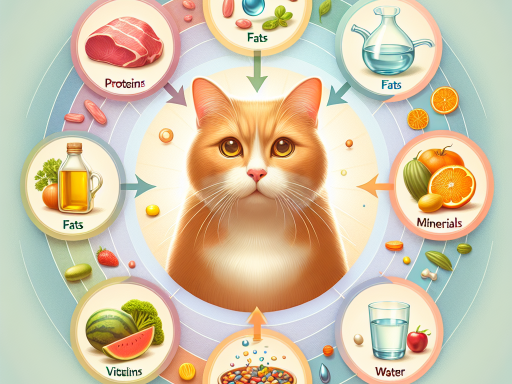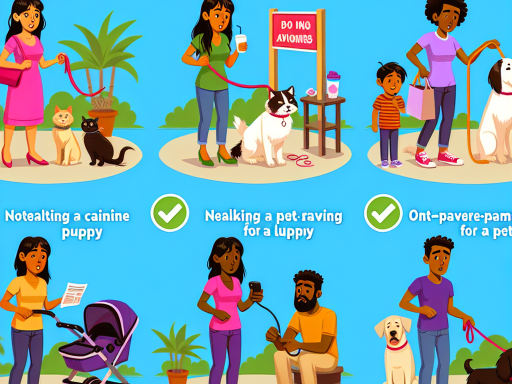Understanding your dog’s happiness
Hey there, pet parent! As a dog owner, one of the most rewarding aspects of having a furry companion is seeing them happy and thriving. But how do you know if your dog is truly happy? Well, fret not! In this guide, we’ll dive into the world of canine happiness and explore the different ways you can gauge your dog’s well-being.
Our canine friends may not be able to communicate with words, but they have their own unique ways of expressing their emotions. By paying close attention to their behavior and body language, you can gain valuable insights into your dog’s happiness levels.
So, grab a treat (for your dog, of course!) and let’s embark on this journey together!
Body Language: How to interpret your dog’s behavior
Have you ever wondered what your furry friend is trying to tell you through their actions? Dogs communicate a lot through their body language, and understanding these signals can help you gauge their happiness and well-being. Here are some key cues to look out for:
- Tail Wagging: Contrary to popular belief, a wagging tail doesn’t always mean a happy dog. The position and speed of the wag can convey different emotions. A high wagging tail indicates excitement, while a low wag may signal insecurity or fear. A fast wag usually means happiness, while a slow wag can suggest caution.
- Ear Position: Dogs’ ears are quite expressive. Forward ears indicate alertness or interest, while flattened ears may signal fear or anxiety. Drooping ears can mean relaxation or contentment.
- Eye Contact: Maintaining eye contact can be a sign of trust and affection in dogs. However, prolonged staring can be perceived as a threat. Averting their gaze or blinking can be a way for dogs to show submission.
- Body Posture: A relaxed and loose body posture typically indicates a happy and comfortable dog. Play bows, where a dog lowers their front body while keeping their hind end up, are a common invitation to play and a sign of happiness.
- Facial Expressions: Just like humans, dogs can convey emotions through their facial expressions. A relaxed face with a slightly open mouth and soft eyes often indicates contentment, while a tense face with narrowed eyes may signal discomfort or aggression.
- Vocalizations: Barking, whining, growling, or howling are forms of communication for dogs. While barking can indicate excitement or alertness, whining may signal anxiety or discomfort. Growling can be a sign of aggression, while howling is often a response to loneliness or seeking attention.
By paying attention to your dog’s body language, you can gain valuable insights into their emotions and overall well-being. Remember that each dog is unique, so it’s essential to consider their individual personality and past experiences when interpreting their behaviors. If you notice any sudden changes or concerning signs in your dog’s body language, it’s always best to consult with a veterinarian or a professional dog behaviorist for guidance.
Playfulness: The Importance of Play in Measuring Happiness
Hey there, dog lovers! Have you ever wondered how to tell if your furry friend is happy? One key indicator is their level of playfulness. Dogs are naturally playful creatures, and engaging in play is not only fun for them but also essential for their overall well-being.
When your dog is happy and content, they are more likely to exhibit playful behavior. This can manifest in various ways, such as running around, chasing toys, playing fetch, or simply wagging their tail with joy. Pay attention to how your dog interacts with their toys and with you during playtime, as it can give you valuable insights into their emotional state.
Play is not just a form of entertainment for dogs; it is also a way for them to release pent-up energy, relieve stress, and strengthen their bond with you. Regular play sessions can help keep your dog mentally stimulated, physically active, and emotionally fulfilled.
If you notice that your dog is reluctant to play or seems disinterested in their favorite toys, it could be a sign that something is amiss. Dogs, like humans, can experience changes in their mood and behavior based on various factors such as stress, illness, or boredom. In such cases, it’s essential to pay attention to their cues and take the necessary steps to address any underlying issues.
As a responsible pet owner, it’s crucial to make time for play with your dog on a daily basis. Whether it’s a game of tug-of-war, a brisk walk in the park, or a relaxing cuddle session, these moments of shared joy can strengthen your bond and enhance your dog’s overall happiness.
Remember, every dog is unique, and their preferences for play may vary. Some dogs may enjoy interactive toys, while others may prefer running around in the backyard. By observing and understanding your dog’s individual play style, you can tailor your interactions to suit their needs and ensure they stay happy and healthy.
So, the next time you’re wondering if your dog is truly happy, just look for those playful moments that bring a sparkle to their eyes and a wag to their tail. Playfulness is not just a measure of happiness; it’s a vital part of your dog’s well-being and a reflection of the special bond you share.
Appetite and Energy Levels: Signs of a content dog
Have you ever wondered if your furry friend is truly happy? Understanding your dog’s happiness can sometimes be a challenge, but paying attention to their appetite and energy levels can provide valuable insights into their well-being.
When it comes to appetite, a happy dog will typically have a healthy and consistent eating pattern. They will eagerly devour their food and show enthusiasm during meal times. On the other hand, a loss of appetite or sudden changes in eating habits could indicate underlying health issues or unhappiness.
Monitoring your dog’s energy levels is also crucial in gauging their happiness. A content dog will exhibit a good balance of activity and rest. They will be excited and playful when it’s time for a walk or a game of fetch, but also know when to relax and unwind. If you notice your dog being lethargic or uninterested in activities they usually enjoy, it may be a sign that something is amiss.
It’s important to remember that every dog is unique, and their appetite and energy levels can vary based on factors such as age, breed, and overall health. However, as a pet parent, you are in the best position to observe and understand what is normal for your furry companion.
One way to keep track of your dog’s appetite and energy levels is to establish a routine. Regular feeding times and exercise sessions can help you notice any deviations from the norm. Keeping a journal or log of your dog’s eating habits and activity levels can also be helpful in identifying any changes over time.
If you notice any concerning changes in your dog’s appetite or energy levels, it’s always best to consult with your veterinarian. They can help rule out any underlying health issues and provide guidance on how to keep your furry friend happy and healthy.
Remember, a happy dog is a healthy dog. By paying attention to their appetite and energy levels, you can ensure that your furry friend is thriving and living their best life.
Social Interactions: Observing how your dog interacts with others
One of the key indicators of your dog’s happiness is how they interact with other dogs and people. Dogs are social animals, and their interactions with others can give you valuable insights into their emotional well-being.
Pay attention to how your dog greets other dogs and people. A happy dog will typically display friendly body language, such as wagging their tail, a relaxed posture, and a wagging tongue. They may also playfully engage with other dogs, showing a desire for social interaction and companionship.
On the other hand, if your dog seems anxious or aggressive around others, it may be a sign of stress or unhappiness. Keep an eye out for signs of fear, such as cowering, growling, or snapping. These behaviors may indicate that your dog is feeling threatened or uncomfortable in social situations.
It’s important to allow your dog to socialize and interact with others in a safe and controlled environment. This can help them build confidence, develop social skills, and form positive relationships with both dogs and people. Regular trips to the dog park, playdates with other dogs, and obedience classes can all provide valuable opportunities for socialization.
Remember to always supervise your dog’s interactions with others and be mindful of their body language. If you notice any signs of stress or discomfort, give your dog space and remove them from the situation if necessary.
By observing how your dog interacts with others, you can gain valuable insights into their emotional well-being and ensure that they are happy and healthy. Remember, a happy dog is a social dog!
VI. Body Condition: The physical signs of a happy dog
As a pet owner, it’s important to pay attention to your furry friend’s body condition as it can be a great indicator of their overall happiness and well-being. A happy dog is a healthy dog, so taking note of their physical appearance and behavior is crucial in ensuring they are thriving.
One of the key signs of a happy dog is their coat. A healthy, happy dog will have a shiny and smooth coat free of mats or tangles. Regular grooming and a balanced diet can help keep your dog’s coat in top condition. If you notice any changes in their coat, such as dryness, excessive shedding, or bald spots, it may be a sign that something is amiss and a trip to the vet is a good idea.
Another important aspect of your dog’s body condition is their weight. A happy dog will maintain a healthy weight that is appropriate for their breed and size. You should be able to feel your dog’s ribs without them being visible, and their waist should be noticeable when viewed from above. Overweight or underweight dogs may be experiencing health issues that need to be addressed, so monitoring their weight and adjusting their diet and exercise accordingly is essential for their well-being.
Additionally, keeping an eye on your dog’s eyes, ears, and teeth can give you valuable insights into their health and happiness. Bright, clear eyes free of discharge, clean and odor-free ears, and white teeth without tartar buildup are all signs of a content and healthy dog. Regularly checking these areas and addressing any abnormalities promptly can help prevent more serious health issues down the line.
Furthermore, paying attention to your dog’s energy levels and mobility can also indicate their overall happiness. A happy dog will be active, playful, and eager to engage in activities with you. If you notice a sudden decrease in their energy levels, reluctance to play, or any signs of pain or discomfort while moving, it could be a sign that they are not feeling their best and may need medical attention.
Remember, every dog is unique, and what is normal for one dog may not be for another. By familiarizing yourself with your dog’s normal body condition and behavior, you’ll be better equipped to notice any changes that may indicate a problem. Regular visits to the vet for check-ups and maintaining a healthy diet and exercise routine are key to keeping your furry friend happy and healthy.
So, next time you give your pup a belly rub or a scratch behind the ears, take a moment to observe their body condition and behavior. Your dog’s well-being is in your hands, and by being attentive and proactive, you can ensure they lead a long, happy, and healthy life.
When it comes to ensuring the well-being of your furry friend, there are various factors to consider. From understanding your dog’s body language to monitoring their playfulness and social interactions, there are numerous ways to gauge your dog’s happiness. However, one crucial aspect that should not be overlooked is the overall body condition of your dog.
Just like humans, a dog’s physical health plays a significant role in their overall happiness and well-being. Ensuring that your dog is in good shape can have a positive impact on their mood, energy levels, and overall quality of life. Here are some key indicators to look out for when assessing your dog’s body condition:
Weight
One of the most obvious signs of a happy and healthy dog is their weight. It’s important to monitor your dog’s weight regularly and ensure that they are neither underweight nor overweight. A healthy weight can promote better mobility, prevent various health issues, and contribute to a happier and more active lifestyle for your dog.
Coat and Skin
Another important aspect to consider is the condition of your dog’s coat and skin. A shiny coat and healthy skin are indicative of a well-nourished and happy dog. Keep an eye out for any signs of dryness, irritation, or hair loss, as these could be signs of underlying health issues that need to be addressed.
Muscle Tone
Assessing your dog’s muscle tone can also give you valuable insights into their overall health and well-being. A lean and toned physique is a good indicator of a dog that is getting enough exercise and proper nutrition. Regular exercise and a balanced diet can help maintain your dog’s muscle tone and keep them in optimal condition.
Dental Health
Don’t forget to check your dog’s dental health as well. Healthy teeth and gums are essential for your dog’s overall well-being. Regular dental care, including brushing your dog’s teeth and providing dental treats, can help prevent dental issues and keep your dog’s smile bright and healthy.
By paying attention to these key indicators of your dog’s body condition, you can ensure that your furry companion is happy, healthy, and thriving. Remember, a happy dog is a healthy dog, so it’s important to prioritize their physical well-being alongside their emotional and mental health. If you have any concerns about your dog’s body condition, don’t hesitate to consult with your veterinarian for professional advice and guidance.
Ultimately, your dog’s well-being is in your hands, and by taking proactive steps to monitor and maintain their body condition, you can help them lead a long, happy, and fulfilling life. So keep an eye on your dog’s weight, coat, muscle tone, and dental health, and make sure to provide them with the care and attention they deserve. Your dog will thank you with wagging tails, sloppy kisses, and endless love!





